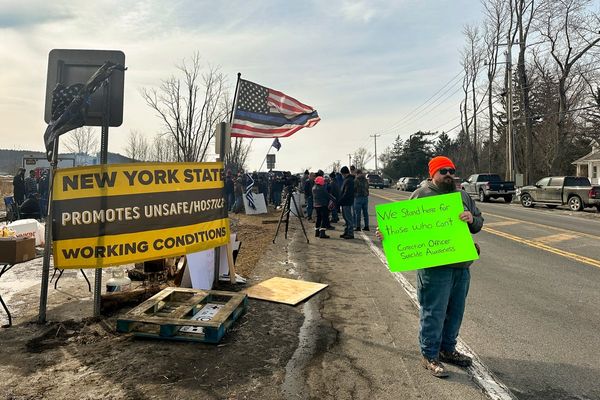MINNEAPOLIS — For a brief moment in time, there was peace in the valley at the Minnesota statehouse.
Nearly 200 goats and sheep fanned out and munched on grasses on a sunny hillside across the street from the Capitol building downtown St. Paul, a strikingly pastoral scene in a place better known for political gridlock.
Government workers passing by last week stopped in their tracks and pulled out their phones to take video. Politicians emerged from their offices to snap selfies. Cars slowed to a snail's pace and passengers rolled down windows to ask the obvious question: "Are those ... goats?"
"People really like it," said Audrey Lomax, grazing program manager for MNL (Minnesota Native Landscapes), who was watching over the flock Friday. "It's the novelty of having animals in the city, really being that contrast to what we think of as modern life."
The roughly 60 goats and 120 sheep perched on the hillside for hours, lunching on tall plants and completely unaware of the fuss they were causing. The situation was also unusual for Lomax and other MNL employees, who typically deploy their flock of Katahdin sheep to graze in solar panel fields far outside the city.
The Spanish goats like to jump on the solar panels, she said, so they are usually clearing the invasive buckthorn shrub from deciduous forests.
But the state hired MNL and its sheep and goats to clear dead plants and tall grasses that have accumulated on the hillside across from the Capitol and in Cass Gilbert Memorial Park.
In nature, fire often serves the ecological purpose of clearing out dead plants and making way for new seeds to germinate. But a controlled burn on the hillside across the street from the Capitol would have caused even more commotion than the goats, said Lomax.
And animals have also been doing this work for thousands of years.
"Their little niche within the whole system is becoming more clear to people," she said. "We removed animals from the land for so long, now we are trying to find ways to pair our modern world with this old function that's really important."
The hungry workers were to finish their job Friday evening. A few border collies are used to help round them up to head to their next job.
But their work will make way for MNL to return in the spring, when they'll plant seed to restore native prairie grasses at the Capitol.







